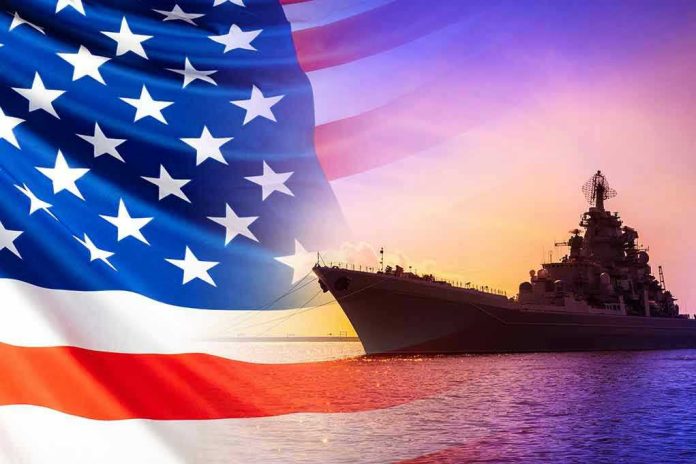
America’s adversaries are exploiting hybrid warfare on the seas, blending cyberattacks, propaganda, and economic threats with naval power—challenging not just our security, but the constitutional values and sovereignty that define us.
Story Snapshot
- Modern gunboat diplomacy fuses naval intimidation with cyber and economic tactics, targeting U.S. interests and allies.
- China and Russia are escalating hybrid operations in the South China Sea and Black Sea, undermining global stability.
- Hybrid warfare blurs the line between peace and conflict, complicating deterrence and risking U.S. constitutional principles.
- America’s resolve and commitment to conservative values are key in defending freedom and international law against these evolving threats.
Hybrid Warfare: Naval Power Meets Cyber and Economic Pressure
In 2025, the United States faces a new breed of maritime confrontation. Traditional gunboat diplomacy—once defined by the visible presence of warships to intimidate weaker states—has been replaced by hybrid warfare. Now, hostile powers deploy cyberattacks, economic coercion, and information manipulation alongside naval maneuvers. This approach lets rivals like China and Russia strike at American interests and our allies without triggering open conflict, creating a persistent threat to U.S. influence and the constitutional order that underpins global stability.
The South China Sea and Black Sea have become the main theaters for this modern hybrid playbook. Chinese naval patrols, artificial island construction, and maritime militia operations are matched by digital propaganda campaigns and cyber intrusions targeting U.S. and allied naval infrastructure. In the Black Sea, Russia combines aggressive naval maneuvers with cyberattacks and disinformation aimed at Ukraine and NATO, seeking to undermine Western resolve and sow chaos throughout the region. These tactics disrupt trade, threaten energy routes, and pressure smaller nations to abandon their sovereignty and values in the face of relentless intimidation.
Historical Roots: Gunboat Diplomacy’s Evolution and the Rise of Hybrid Tactics
Gunboat diplomacy originated in the 19th century, when Western powers—primarily the United States, United Kingdom, France, and Germany—used naval might to force concessions and protect their interests abroad. The mere sight of an American or British warship off a foreign coast often compelled compliance without a shot fired. In the early 20th century, the U.S. projected power in Latin America and Asia, reinforcing its role as a defender of freedom and commerce. After World War II, overt displays of force gave way to multilateral agreements and international law, but the underlying principle of deterrence remained central to U.S. strategy.
Today’s hybrid warfare revives the spirit of gunboat diplomacy but adds a dangerous twist: non-military tools are now wielded with the same intent to coerce and destabilize. China’s “gray zone” operations and Russia’s cyber-enabled naval brinkmanship exploit gaps in international law and challenge America’s traditional means of response. This evolution threatens not only the free flow of goods and ideas but the constitutional principles—such as due process, free enterprise, and the right to self-defense—that define the American way of life.
Key Players: Major Powers, Regional States, and the Battle for Influence
The main actors in this modern struggle are nation-states with global ambitions—China, Russia, and to a lesser extent, Iran and North Korea. Their navies, cyber units, and propaganda arms operate in concert to challenge U.S. leadership and the rules-based order that has kept the world relatively safe for decades. The United States Navy, backed by committed allies like Japan, the United Kingdom, and Australia, conducts “freedom of navigation” operations to assert international law and deter aggression. Smaller regional states, from the Philippines to Ukraine, find themselves on the front lines, balancing national sovereignty with the risks of antagonizing powerful neighbors.
International organizations such as the United Nations and NATO attempt to mediate disputes and uphold norms, but their influence is increasingly tested by the rise of hybrid tactics. Non-state actors, including private military contractors and cyber groups, further muddy the waters, making attribution and accountability more difficult. The resulting power dynamics are volatile, with the potential for miscalculation and unintended escalation ever-present.
Consequences for America: Security, Prosperity, and Conservative Values at Stake
Hybrid warfare at sea has real-world consequences for American citizens and conservative priorities. Disrupted shipping lanes and energy routes threaten the economy, while increased defense spending strains the federal budget—already battered by years of leftist overspending and globalist entanglements. The militarization of contested maritime regions erodes the international norms that protect U.S. commerce and travel, while emboldened adversaries test America’s resolve and the constitutional safeguards that ensure our freedom.
Gunboat diplomacy: How classic naval coercion has evolved into hybrid warfare on the water https://t.co/A5fZDjdv1v via @ConversationUS
— Prof. Andrew A Latham (@aalatham) October 20, 2025



